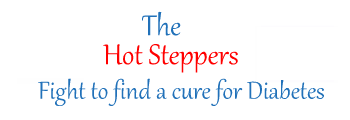Frequently Asked Questions
1. How much of the money raised actually goes to help find a cure for Diabetes?
80% of all money raised goes directly to support research and research related education.
2. What is some of the research that is currently being worked on by JDRF?
• an automated low-glucose suspend artificial pancreas system, which predicts and prevents severe blood-glucose lows
• a treat-to-range artificial pancreas system, which automatically keeps blood-glucose levels in a specified range
• the use of existing type 2 diabetes drugs to improve blood-glucose control in people with T1D compared to the use of
insulin alone
• the use of donated human islets as a treatment for low–blood glucose unawareness
• a beta cell encapsulation product providing insulin independence for more than a year without the need for chronic
immunosuppression
• a glucose responsive insulin that provides glycemic control with a single shot per day, or less often
3. How many people have Diabetes?
Nearly 26 million Americans have diabetes and by 371 million people worldwide. Research predicts that 552 million people will be
diagnosed by the year 2030.
4. What are some of the effects that Diabetes has?
• Diabetes is the leading cause of kidney failure, non-traumatic lower-limb amputations, and new cases of blindness among
adults in the U.S.
• Diabetes is a major cause of heart disease and stroke.
• Diabetes is the seventh leading cause of death in the United States. The risk of death for people with diabetes is about double
that of people of similar age without diabetes.
5. Doesn’t T1D just affect kids?
Type 1 diabetes strikes both children and adults at any age. It comes on suddenly, causes dependence on injected or pumped
insulin for life, and carries the constant threat of devastating complications.
6. Isn’t insulin a cure?
While insulin injections or infusion allow a person with T1D to stay alive, they do not cure the disease, nor do they necessarily
prevent the possibility of the disease’s serious effects.
7. How do I know if I have T1D?
Here are some of the signs you may experience.
• Frequent urination• Extreme thirst
• Drowsiness or lethargy• Increased appetite
• Sudden weight loss
• Sudden vision changes
